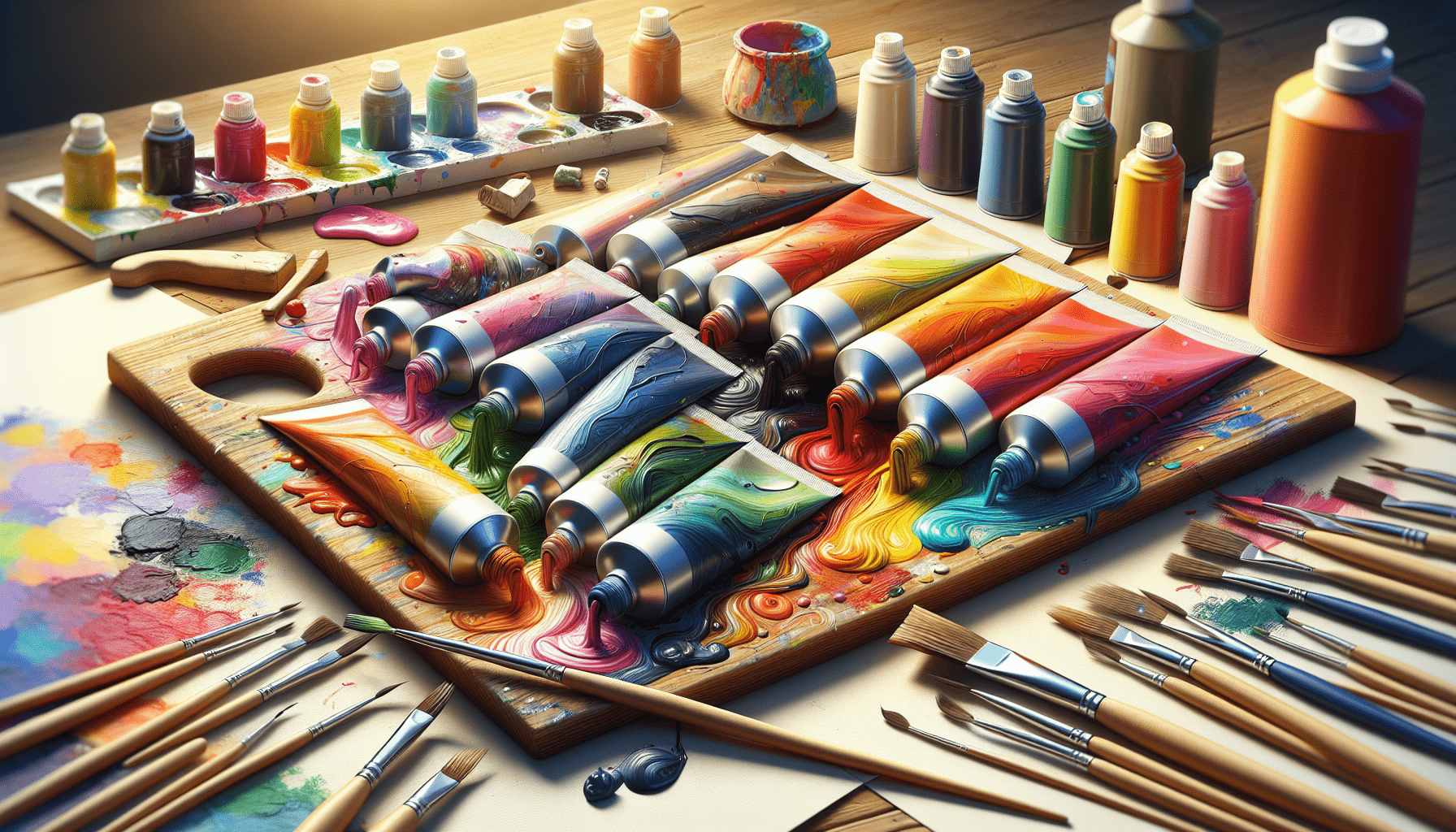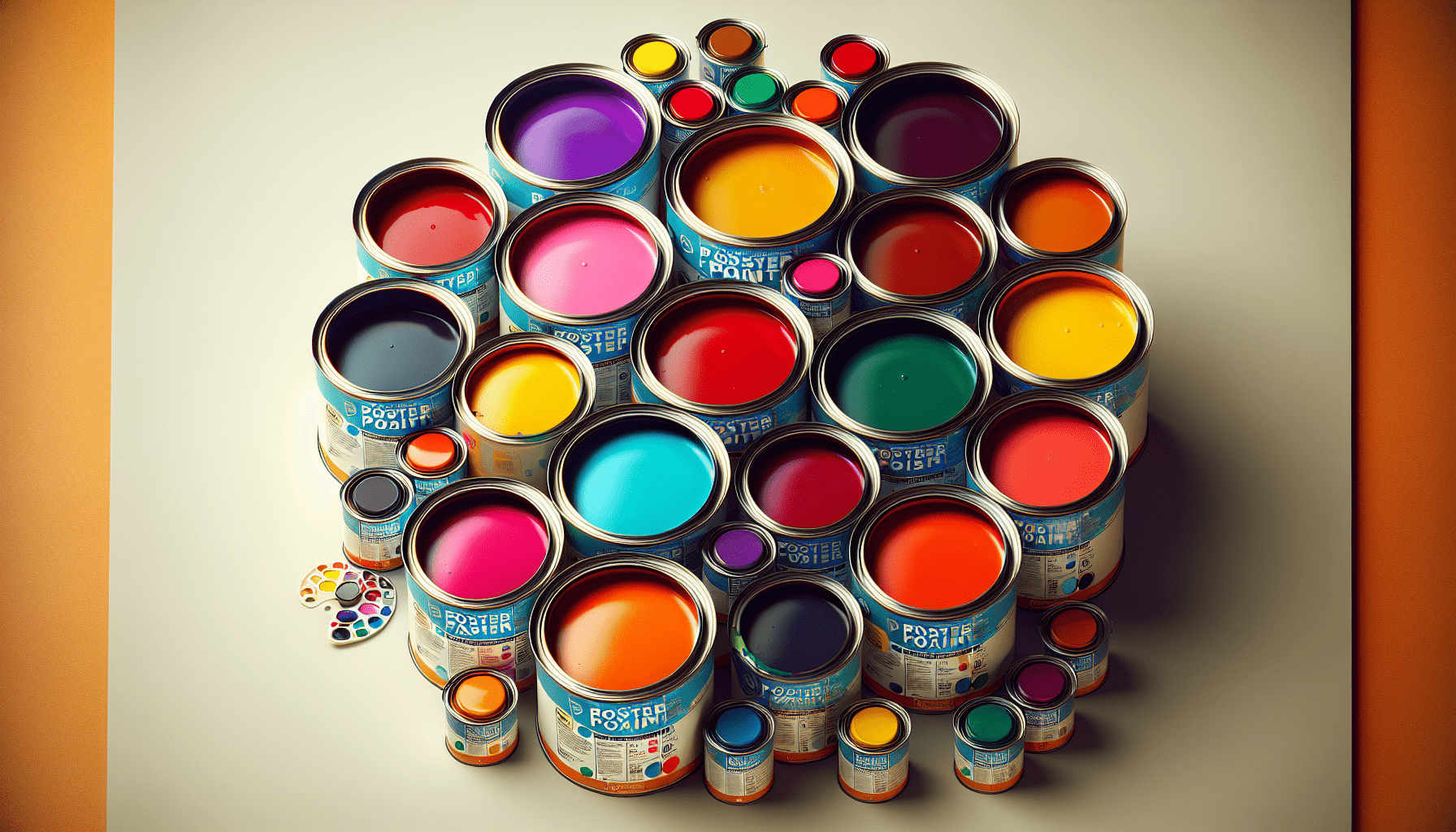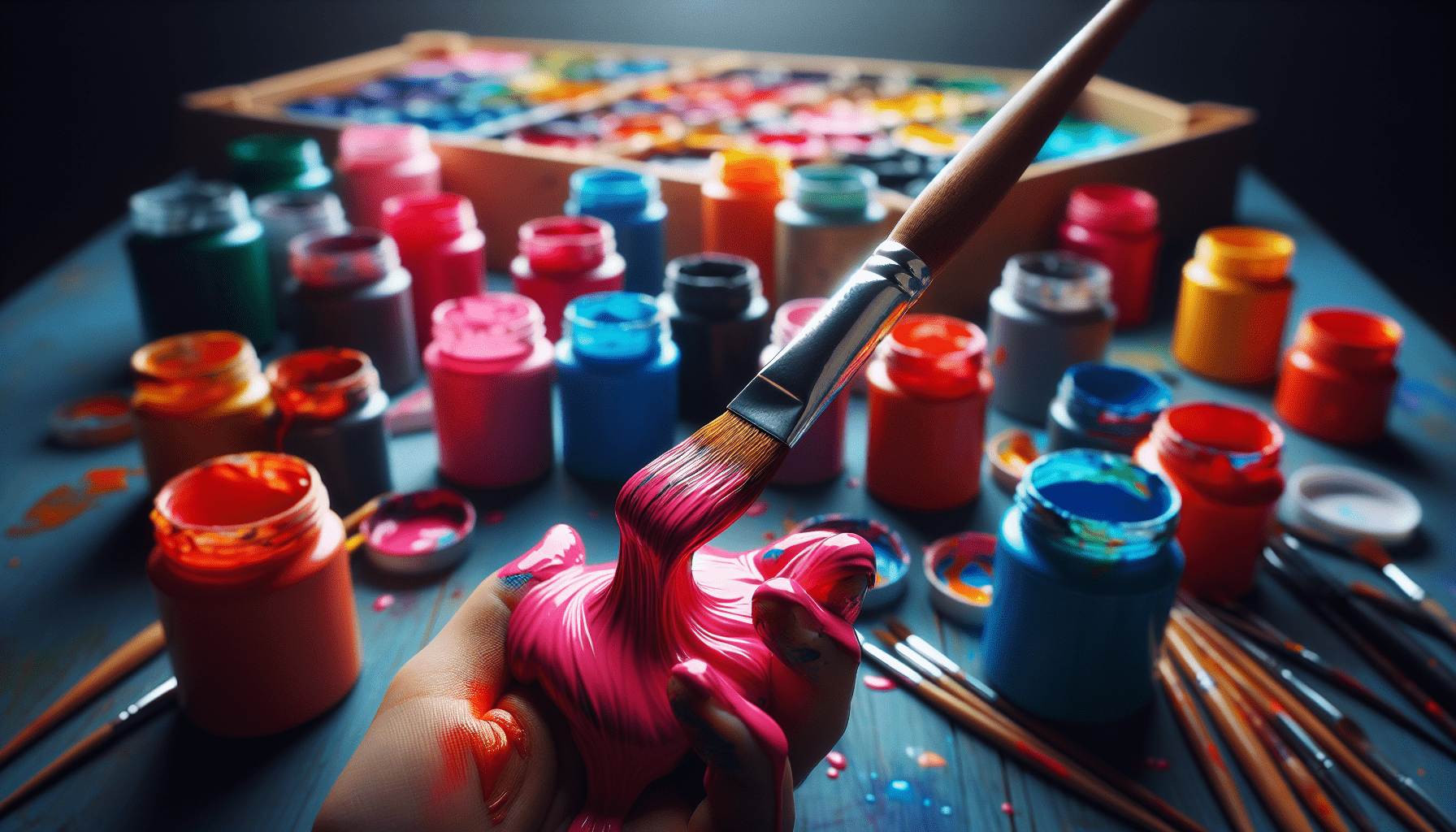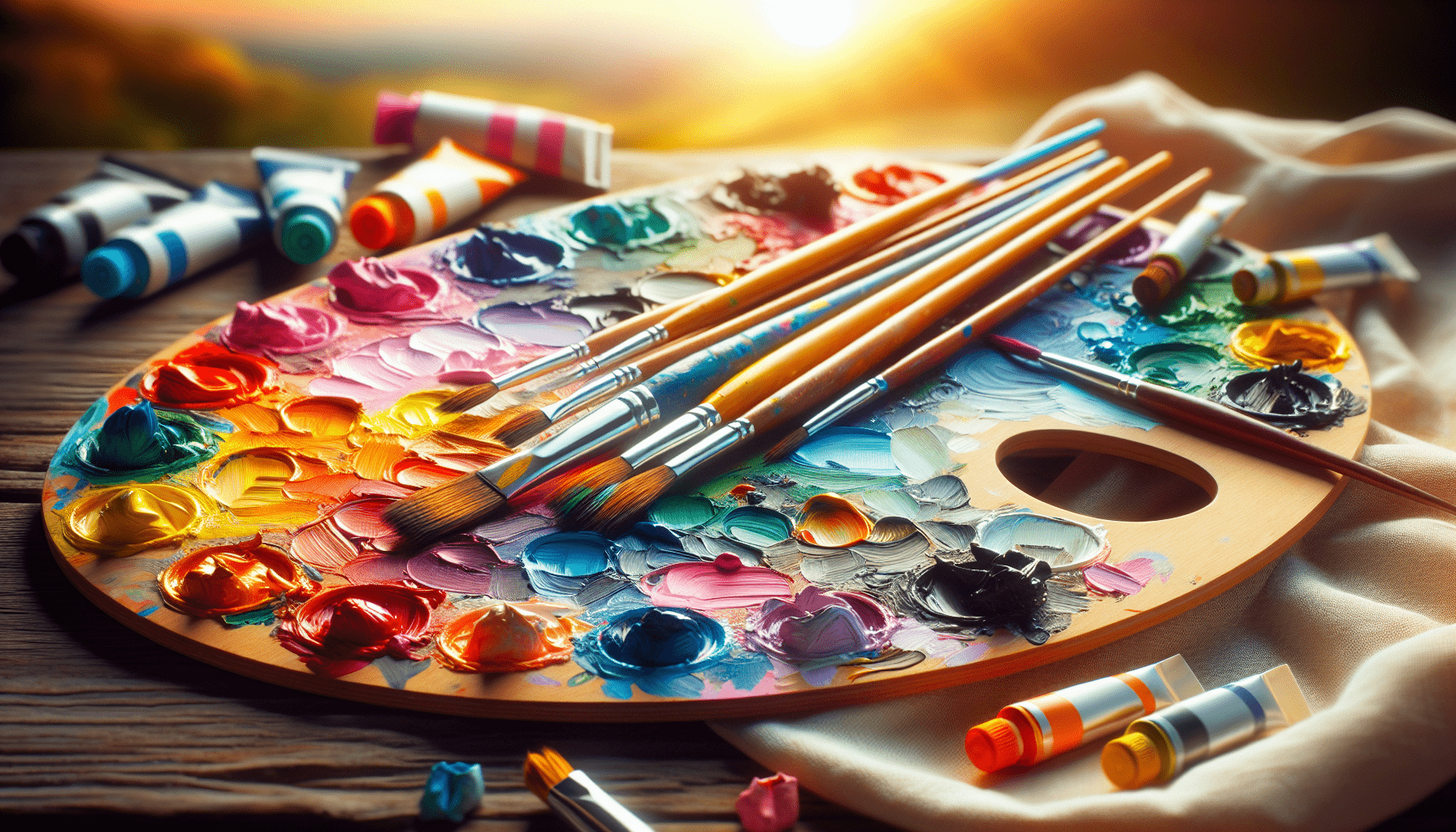Have you ever wondered if it’s possible to transform your existing poster paints into something more versatile and durable like acrylic paint? Understanding the process of converting poster paint into acrylic can empower you to create diverse artworks that stand the test of time. While poster paints are known for their easy use and vibrant colors, they lack the durability and flexibility that acrylic paints offer. Let’s take a comprehensive look at how you can make this transformation.
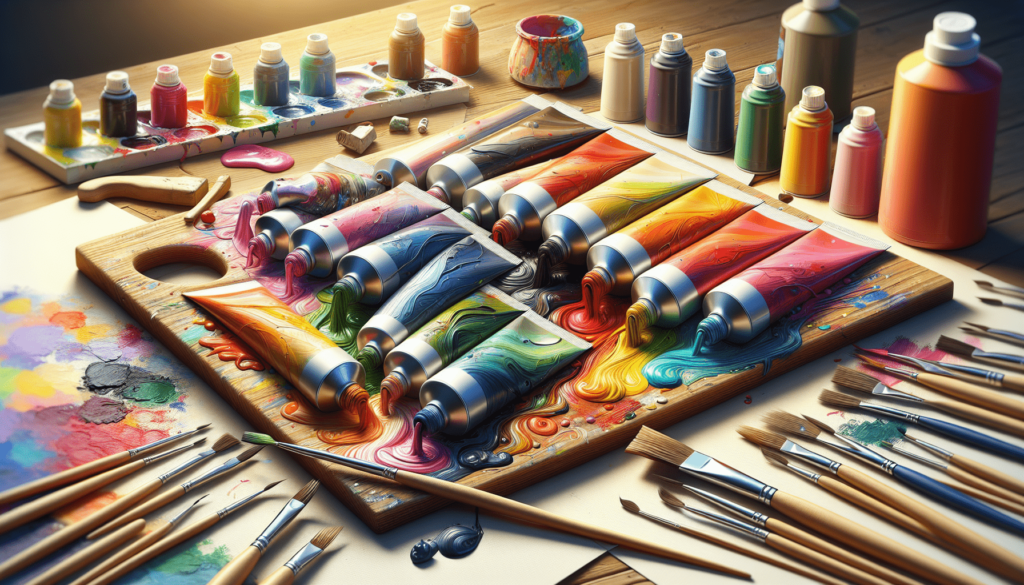
Difference Between Poster Paint and Acrylic Paint
Composition
poster paints are typically water-based paints containing a blend of pigments, water, and a type of binder such as gum Arabic or a similar compound. They are known for their ease of use but are often less durable because they are easily reactivated by water.
Acrylic paints, on the other hand, comprise pigments suspended in an acrylic polymer emulsion. This gives them a more durable finish, as they form a water-resistant film once dried. Acrylic paints provide great flexibility, adhering well to a variety of surfaces.
Usage
Poster paints are commonly used for educational purposes or temporary projects, ideal for quick color application but less suited for long-term artworks. Acrylic paints find extensive use in professional art because they can be manipulated to mimic the qualities of both watercolor and oil paints, offering opacity, permanence, and versatility.
Longevity
Acrylic paints are recognized for their longevity and resistance to fading over time, making them suitable for artworks intended to last. Conversely, poster paints, when dried, can become brittle and are prone to cracking, which diminishes the lasting quality of the artwork.
Materials Needed
To turn poster paint into acrylic, you’ll need the following materials:
| Material | Purpose |
|---|---|
| Poster Paints | Base paint to be converted |
| Acrylic Medium | Binder that turns poster paints into acrylic forms |
| Stirring Sticks | For mixing the paints and mediums thoroughly |
| Measuring Cups | For accurate measurement of paints and mediums |
| Palette Knife | To thoroughly blend the mixture |
| Sealed Containers | For storing the converted acrylic paint |
| Protective Gear | Gloves and masks to ensure safety during mixing |
Utilizing these tools ensures that the conversion process is both accurate and efficient, leading to a final product that closely resembles traditional acrylic paint.
Step-By-Step Guide
Step 1: Preparing Your Workspace
Start by setting up a clean, organized workspace. Ensure that you have all the materials within reach and that the area is well-ventilated to avoid inhaling any potentially harmful fumes. Lay down some protective covering to shield your work surface from any spills.
Step 2: Measuring the Poster Paint
Using a measuring cup, pour the desired amount of poster paint into a container. Accurate measurement is crucial to maintain the consistency of the final acrylic paint. It’s generally advisable to start with smaller quantities to test the results before scaling up.
Step 3: Adding the Acrylic Medium
Squeeze out a similar amount of acrylic medium into the container holding the poster paint. The ratio of poster paint to acrylic medium generally varies; however, a common starting point is a 1:1 ratio. You can adjust based on the consistency and finish you desire.
Step 4: Mixing
Utilize stirring sticks or a palette knife to mix the poster paint and acrylic medium thoroughly. Ensure there are no lumps and that the mixture is smooth. This step may require some patience because achieving a homogeneous mix is essential for the paint to function like true acrylics.
Step 5: Testing
Before committing to large-scale projects, test the converted paint on a sample surface. Allow it to dry and observe its texture, adhesion, and finish. Ensure it behaves like acrylic, exhibiting flexibility and water resistance once dried.
Step 6: Adjusting
Based on your test, you may need to tweak the formula. If the paint is too thick, you can add a bit more acrylic medium or water. Conversely, if it’s too thin, incorporating more poster paint or a thickening agent can help.
Step 7: Storing
Once you are satisfied with your mixture, store it in sealed containers to prevent drying. Label the containers correctly, noting the date and the specific ratio used, so you can replicate the process in the future.
Tips for Successful Conversion
Quality of Poster Paint
The quality of the poster paint can significantly influence the final product. Higher-quality poster paints with finer pigments tend to blend more seamlessly with acrylic medium, producing a smoother, more consistent acrylic paint.
Consistency
Pay attention to the consistency of your paint. It should not be too runny or too thick, as extreme consistencies can affect the application and durability. A smooth, viscous texture generally works best for most acrylic applications.
Mixing Thoroughly
Ensure thorough mixing of the poster paint with the acrylic medium. Incomplete mixing can result in paint with uneven properties, leading to inconsistencies in your artwork.
Testing on Different Surfaces
Testing your converted acrylic paint on various surfaces (canvas, wood, paper) can provide insights into its versatility. Acrylic paints are celebrated for their adaptability, and testing can confirm that your converted paint meets this standard.

Advantages and Disadvantages
Converting poster paint into acrylic has its own set of advantages and disadvantages:
Advantages
| Advantage | Description |
|---|---|
| Cost-Effective | Using existing poster paints can be more economical than buying new acrylics. |
| Customizable | Ability to alter the consistency and finish to suit specific project needs. |
| Increased Utility | Extends the use of existing art supplies, reducing waste. |
| Immediate Use | Provides a quick solution without needing to purchase new paints. |
Disadvantages
| Disadvantage | Description |
|---|---|
| Time-Consuming | Requires careful measurement and thorough mixing. |
| Consistency Challenges | Achieving the exact consistency of commercial acrylics may be difficult. |
| Variability | Results may vary based on the brands of poster paint and acrylic medium used. |
| Limited Longevity | May not match the longevity and durability of true commercial acrylics. |
Alternatives to Acrylic Medium
If acrylic medium is not an option, several alternatives might still yield effective results. Each of these alternatives has its own unique properties and can alter the final result differently.
PVA Glue
PVA glue, often used in crafting, can create a flexible binder akin to what is found in acrylic mediums. Mixing poster paint with PVA glue can yield a durable paint. However, it may not provide the same consistency or finish as traditional acrylic mediums.
Mod Podge
Mod Podge is another crafting supply that can simulate some properties of acrylic mediums. However, it tends to be less flexible and may not provide the same durability as a dedicated acrylic medium.
Gel Mediums
Gel mediums, although more expensive, can be used to thicken and enhance the texture of poster paint, bringing it closer to acrylics. They offer a range of finishes (gloss, matte) and can alter the paint’s drying time and texture significantly.
Enhancing Converted Paint
Adding Texture
Incorporating texture mediums like sand, beads, or other aggregates can add dimension and depth to your paint, creating unique surface effects that enhance your artistic expression.
Custom Pigments
If your poster paints lack the vibrancy or specific hue needed, you can mix custom pigments into the acrylic medium for richer, more varied color palettes.
Varnishing
Once your artwork is completed with converted acrylic paint, applying a varnish can help protect the surface and enhance the paint’s durability, giving it a professional finish.
Blending With Commercial Acrylics
Blending your homemade acrylics with commercial ones can help balance any inherent deficiencies, such as consistency or color saturation, providing a hybrid solution that maximizes both sets of properties.
Common Mistakes to Avoid
Incorrect Ratios
Using incorrect ratios of poster paint to acrylic medium can result in poor consistency and functionality. Always measure accurately and adjust based on testing.
Incomplete Mixing
Imperfectly mixed paint will not perform as desired, leading to inconsistencies in the finish and application. Take the time needed to mix thoroughly.
Ignoring Testing
Skipping the testing phase can lead to unexpected results in your final artwork. Always test the converted paint on a sample surface to identify potential issues early.
Poor Quality Materials
Using low-quality poster paints or mediums can compromise the final outcome. Investing in higher-quality materials can yield significantly better results.
Safety Considerations
Ventilation
Always ensure your workspace is well-ventilated to avoid inhaling fumes, especially if you are mixing large quantities or using additional chemical additives.
Protective Gear
Wearing gloves and masks during the mixing process can protect you from potential irritants and contact with chemicals. Protective eyewear is also advisable if you are working with larger quantities.
Storage
Store converted acrylic paints in sealed, labeled containers away from children and pets. Proper storage extends the usability of the paint and maintains its quality over time.
Disposal
Dispose of any leftover materials or waste responsibly. Do not pour unused paint down drains. Instead, use appropriate waste facilities to avoid environmental contamination.
Future Innovations and Developments
Technological Advancements
Advances in paint technology might eventually provide more efficient and reliable ways to convert poster paint into acrylic. Innovations such as new binders or more advanced mixing techniques could simplify the process.
Sustainable Materials
With increasing emphasis on sustainability, future developments might offer eco-friendly alternatives to traditional acrylic mediums, reducing the environmental impact while maintaining high performance standards.
User-Friendly Kits
Art supply manufacturers could develop conversion kits that contain pre-measured materials and simple instructions for turning poster paint into acrylic. These would simplify the process, making it more accessible for artists of all skill levels.
Enhanced Durability
Future research may yield new additives or techniques that increase the durability and longevity of converted acrylic paints, bringing them closer to the performance of commercial alternatives.
In conclusion, converting poster paint into acrylic paint involves a series of careful steps and considerations. Although the process requires time and precision, it opens up numerous possibilities for creative expression. By understanding the key differences between paint types, actively testing and adjusting your mixtures, and keeping an eye on future advancements, you can successfully transform your existing supplies into high-quality, versatile acrylic paints suitable for a range of artistic endeavors.
